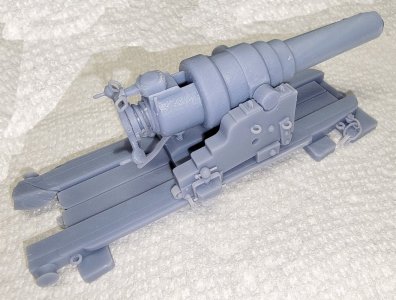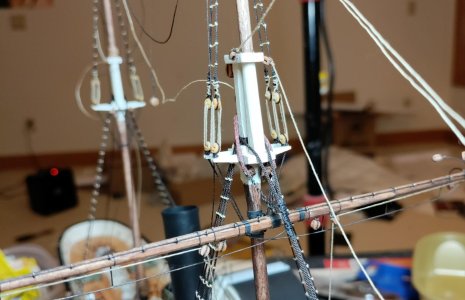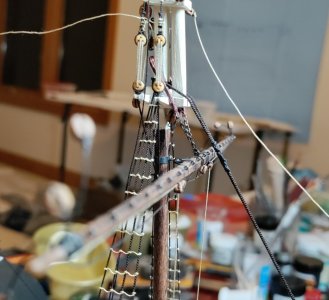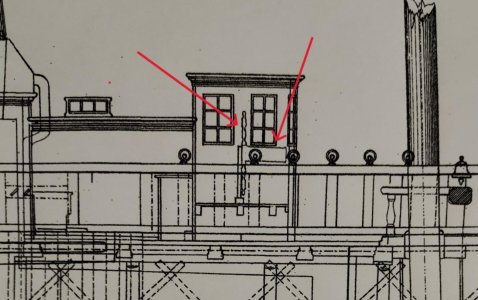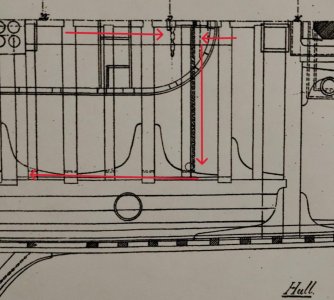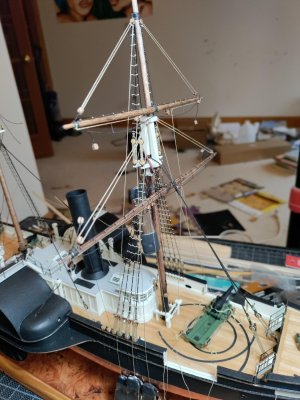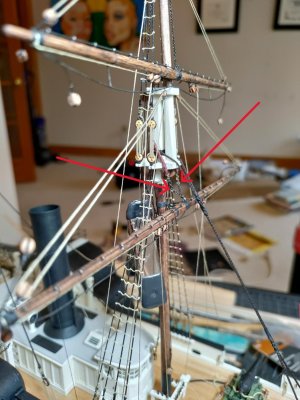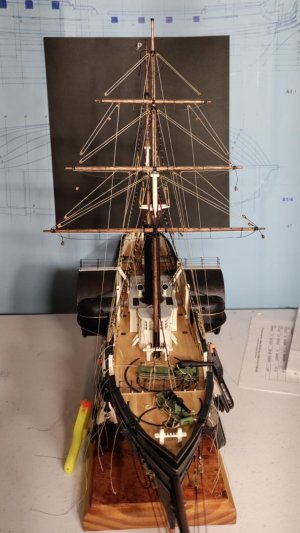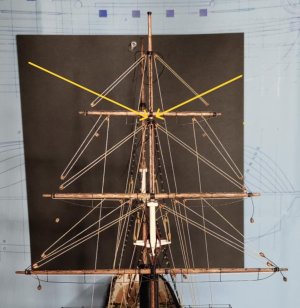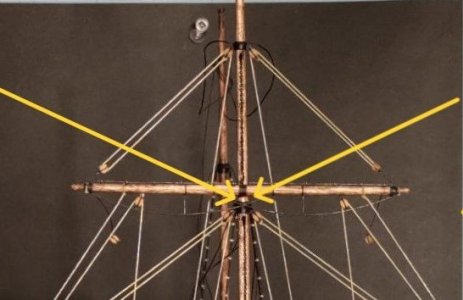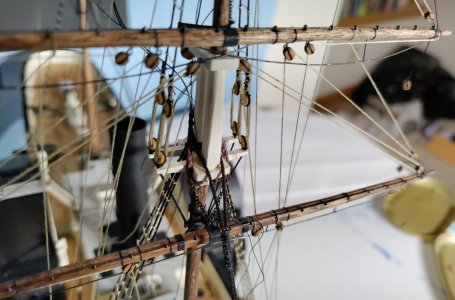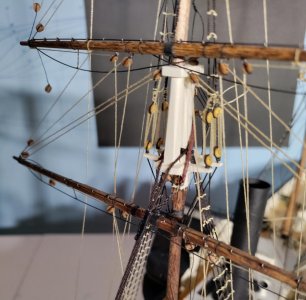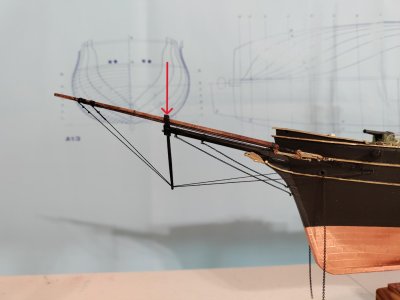- Joined
- May 25, 2020
- Messages
- 728
- Points
- 353

Chuck, Nice work as usual!
I believe that the reason for leaving he ratlines off the main topmast is that there are no square sails here; only the gaff topsail. I also believe that this sail could be set without climbing the topmast. I don’t have time at the moment but I’ll do some checking later today.
Roger
Darn it Roger and Peter! Why weren't you answering my questions before I spent two hours putting unnecessary and inaccurate ratlines on the main top mast shrouds!!!Roger is right about the top sails. It’s also on the schooners like the Bluenose. On that ship were only a few ratlines till the height where the lowered topsails with the mast hoops where collected. And on the main mast a few more then on the fore mast. To then temporarily tie them together with a line. But on your fore mast there is a square sail.
And I think that the gaff sails on your Harriet Lane were lowered to the fore mast.
Regards, Peter

I get it that the absence of square sails and the locations of the working parts didn't require ratlines. But there is other stuff up there that might need servicing at some point. Right? The lower and upper forestays? Oh well. Better research next time - an maybe, like "measure twice cut once", ask questions and wait for the answers! So much patience!
Thank you both so much for your input. Now the question is whether to remove the ratlines from the main topmast shrouds.
And he declared: "VICTORY!" and moved on.
Blessings.
Chuck




